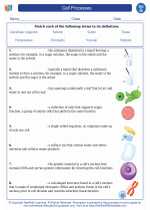Biology: Gel Electrophoresis
Gel electrophoresis is a laboratory technique used to separate and analyze DNA, RNA, or proteins based on their size and charge. This process is crucial in molecular biology, genetics, and biochemistry for various research and diagnostic purposes.
Principles of Gel Electrophoresis
In gel electrophoresis, an electric current is used to move charged molecules through a gel matrix. The gel, typically made of agarose or polyacrylamide, acts as a sieve to separate the molecules based on their size and charge. Smaller molecules move faster through the gel, while larger molecules move more slowly.
Components of Gel Electrophoresis
There are several key components involved in gel electrophoresis:
- Gel Matrix: Agarose or polyacrylamide gel, which provides the medium for separating the molecules.
- Buffer: A conductive solution that facilitates the flow of electric current through the gel.
- Power Supply: Provides the electrical current necessary for the separation process.
- Sample Wells: Indentations in the gel where the samples are loaded for separation.
- Staining and Visualization: After separation, the molecules in the gel are stained and visualized using techniques such as ethidium bromide staining or fluorescent dyes.
Applications of Gel Electrophoresis
Gel electrophoresis has various applications in biology, including:
- DNA fingerprinting and forensic analysis
- Genetic testing and diagnosis of genetic disorders
- Analysis of gene expression and regulation
- Study of DNA mutations and genetic variability
- Protein analysis and characterization
Study Guide for Gel Electrophoresis
When studying gel electrophoresis, it's important to understand the following concepts:
- Principles of molecular movement in an electric field
- Function and composition of the gel matrix
- Factors influencing the separation of molecules in the gel
- Interpretation of gel electrophoresis results
- Applications of gel electrophoresis in research and diagnostics
Key skills to master include:
- Preparing agarose or polyacrylamide gels
- Loading samples into the gel wells
- Operating the power supply for electrophoresis
- Interpreting banding patterns and molecular weights in the gel
- Understanding the significance of gel electrophoresis in biological research
Additionally, familiarizing yourself with the different types of gel electrophoresis, such as DNA electrophoresis and protein electrophoresis, will enhance your understanding of this essential laboratory technique.
[Gel] Related Worksheets and Study Guides:
.◂Biology Worksheets and Study Guides High School. Cell processes
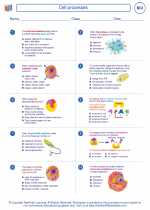
 Worksheet/Answer key
Worksheet/Answer key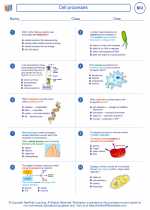
 Worksheet/Answer key
Worksheet/Answer key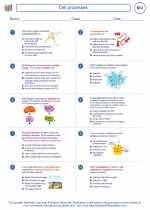
 Vocabulary/Answer key
Vocabulary/Answer key
 Vocabulary/Answer key
Vocabulary/Answer key
 Vocabulary/Answer key
Vocabulary/Answer key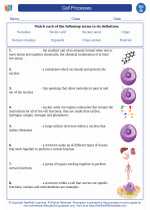
 Vocabulary/Answer key
Vocabulary/Answer key
 Vocabulary/Answer key
Vocabulary/Answer key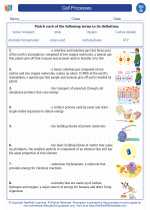
 Vocabulary/Answer key
Vocabulary/Answer key
 Vocabulary/Answer key
Vocabulary/Answer key